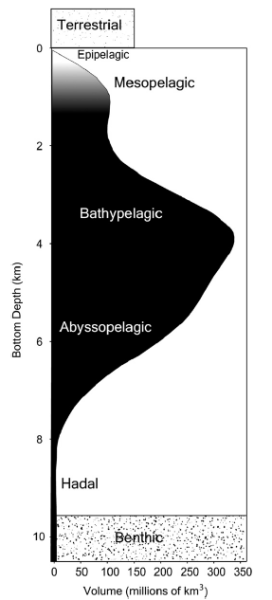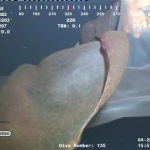
The deep sea, a vast, dark realm featuring disticntive organisms and serving as a massive reservoir of carbon, is the largest and leas explored ecosystem on Earth. At a time when the ocean is responding to anthropogenic forcings, we note that considerably less is known about ecological and biogeochemical processes in the dark ocean (the dim mesopelagic or ‘twilight zone” plus the aphotic bathypelagic zone below) than in the euphotic zone-the focus of several prior major interdsciplinary studies. The biological pump connects surfaces processes to the deepest ocean layers…These deep layers are characterized by significant decomposition, recycling, and repackaging of particulate and dissolved organic matter. thus, the interplay between biological and geochemical processes at depth can have significant affects on the magnitude and efficiency of the biological pump, which regulates in part atmospheric CO2 and, hence climate.
This volume contains many excellent contributions including: Major contribution of autotrophy to microbial carbon cycling in the deep North Atlantic’s interior; Assessing the apparent imbalance between geochemical and biochemical indicators of meso- and bathypelagic biological activity: What the @$#! is wrong with present calculations of carbon budgets? (discussed previously at DSN); and the great reviews Emerging concepts on microbial processes in the bathypelagic ocean – ecology, biogeochemistry, and genomics and Mesopelagic zone ecology and biogeochemistry – a synthesis. Despite the paper not being open access, they are worth a read.






One Reply to “Interactions in the Dark Ocean”
Comments are closed.